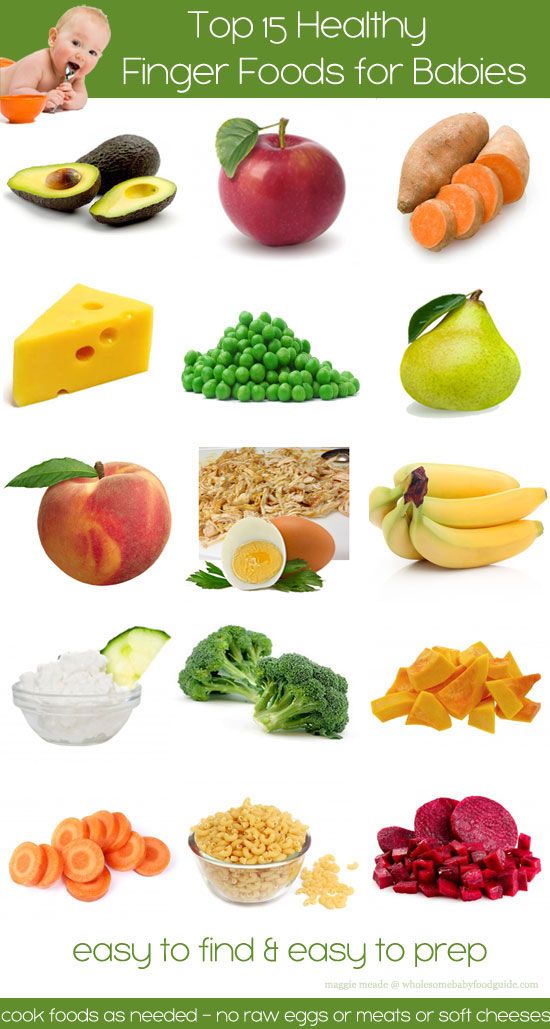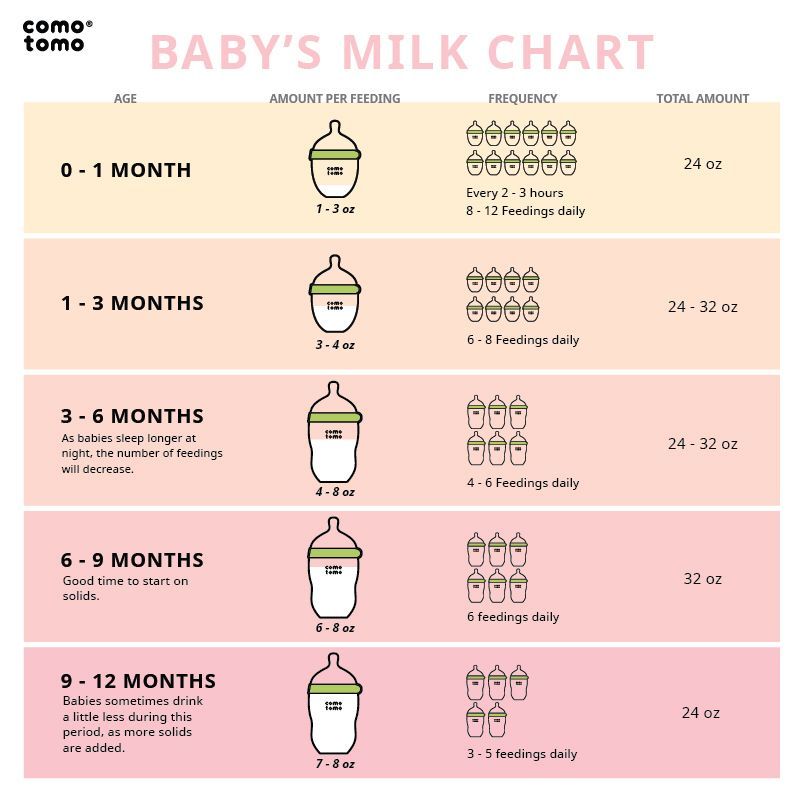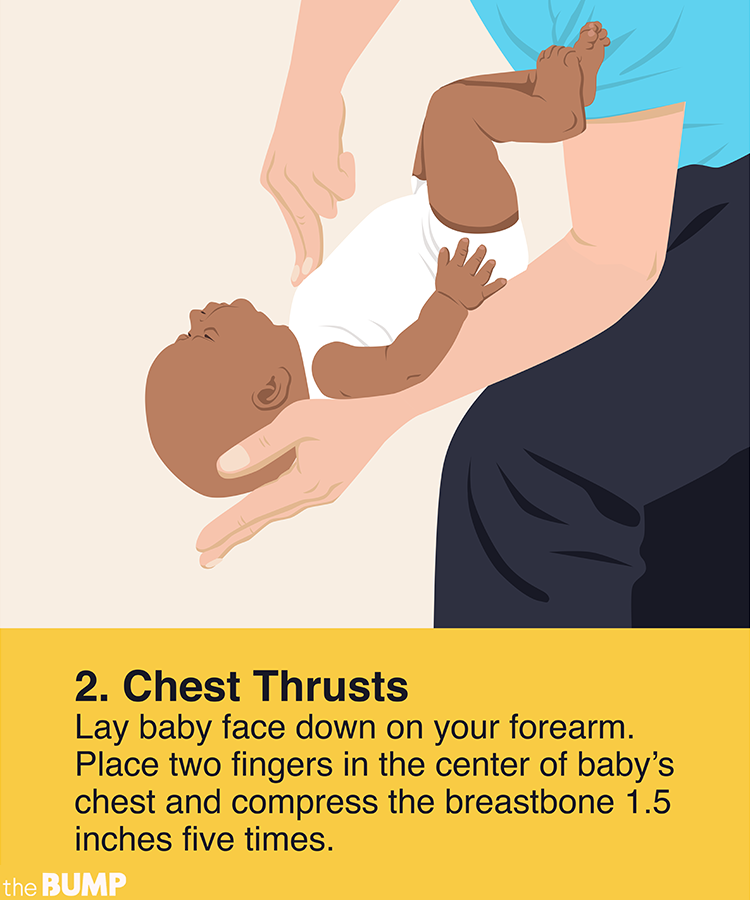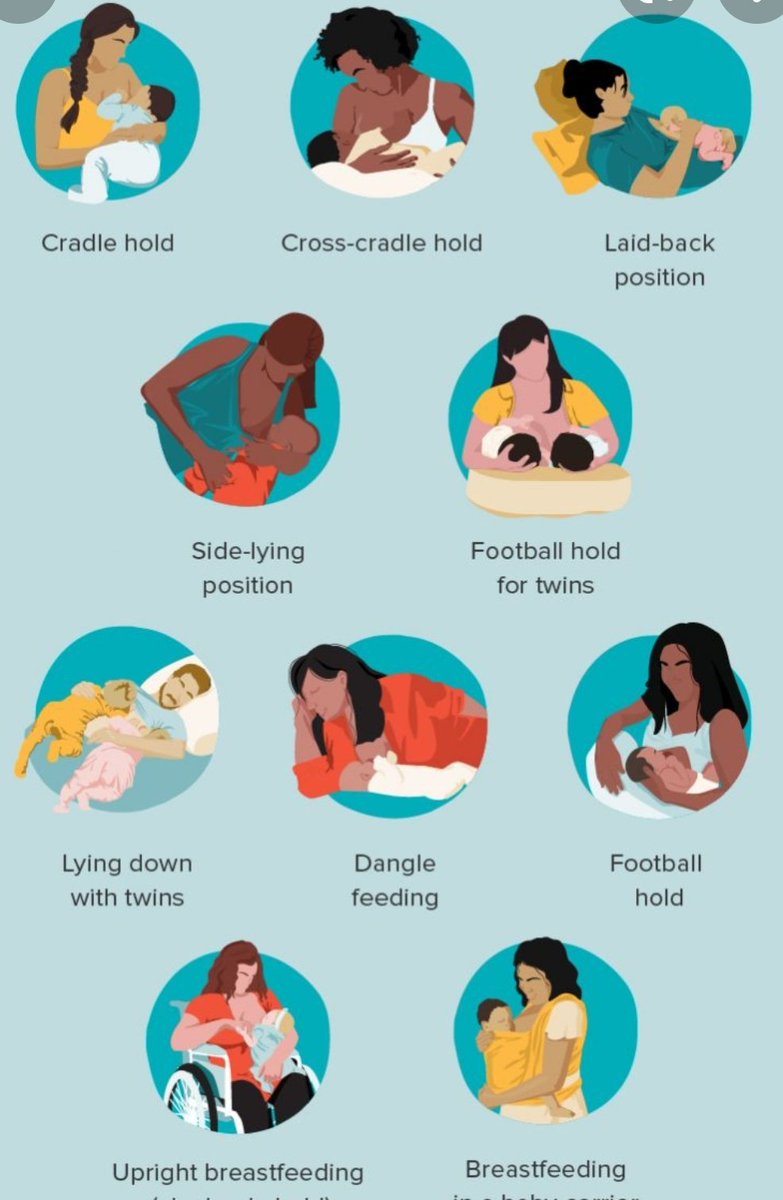Wholesome baby food schedule
Introducing Solids to Your 6 month to 8 month old Baby
Introducing solid foods to your 6 month – 8 month old babyIf your 6 month – 8 month old baby is just starting solids at this stage, start slowly, preparing a very small amount of whatever food you have chosen to begin with. Nurse or bottle feed your baby first and then offer your little one solids. It’s important to remember that baby’s milk continues to be more important than solids at this age – don’t worry when baby won’t eat more than a few bites. Suggested Solid Food Chart for the 6 month old – 8 month old baby below:Click to Print What to Eat at 6 to 8 Months of Age?AGE & STAGE – 6 months to 8 months oldThe AAP recommends that an infant not be started on solid foods until after 6 months of age. Many pediatricians still start babies on solids around 4 months of age. Try mixing together the grains that your baby has had without any reaction(s) – Brown Rice and Oatmeal with Pear Sauce for example. FRUITSBegin making your own fruit combinations once baby has had several fruits without any reaction(s). After 8 months old – you may wish to try offering raw ripe fruits. Soft cooked fruits make for great beginner Baby Finger Foods; Learn about Introducing Baby Finger Foods. VEGGIESVeggie combinations are great to offer now. Ensure that all veggies have been previously offered without any reaction(s) prior to mixing & matching. After 8 months old – you may wish to try offering soft cooked veggies in dices or tiny chunks and bits. Soft cooked veggies make for great beginner Baby Finger Foods. PROTEINOnce your baby has reached 8 months old, try offering tofu finger cubes dusted with Cheerio “dust” or other cereal “dust”. Around 8 months old, you should be able to offer plain whole milk yogurt and mild cheeses to your baby. Many pediatricians even suggest yogurt as a great first food as early as 6 months of age. Mix some yogurt with a favorite fruit puree for a breakfast offering. Visit our Offering Your Baby Yogurt page for more information on introducing Yogurt and Cheese. Baby Led WeaningMore and more parents are opting to skip traditional baby food purees and choose Baby Led Weaning as a method for introducing solid foods. Baby Led Weaning means offering your baby (age appropriate) foods that soft-cooked and cut into small easily manageable pieces. These foods are then given to your baby to eat. You do the cooking, the dicing and the offering of the foods and your baby does the rest. If your 6-8 month old baby is just starting solid foods, you will probably only manage to have baby eat 1/2 of the tablespoon sized portion the very first times you begin solids. If you are using a Baby Led Weaning approach, your baby may only manage to get a few pieces of food into his or her mouth. Don’t fret if your baby does not “finish” a meal. Remember this is a new experience for your baby. As your baby becomes accustomed to eating solids, you will gradually increase the portion sizes. Read How Much Food Should My Baby Eat page for more information. Many parents find their babies will push the food out of their mouths on the first few tries. This is normal however it may also indicate that your baby is not yet ready for solid food.Only you know your baby and will be able to decide if baby is truly ready for solids. I have also compiled a sample schedule that you may find useful. This table gives you an idea of how and when to begin introducing baby to solid foods. Please keep in mind that this table was created from various medical authorities such as private pediatricians, the AAP, the AAFP and the WHO as well as our own experience. This table should be used as a guide only. Always consult your baby’s pediatrician about solid foods Download the new 6 to 8 month old food diary chart! Want to keep track of the foods baby likes and dislikes? Download the free PDF above to keep track of what baby likes to eat, the date of introduction and any allergic reactions baby may have had.
Click here for a printable version of the condensed solid food introduction chart
New Breast-Fed Baby Growth Charts from the World Health Organisation – Reflecting Breast-Fed Babies Growth Patterns The charts presented are general guidelines with solid baby foods that are age appropriate. They may seem somewhat conservative in nature compared to guidelines from other sources. We show age-ranges for different foods and we have researched and compiled these charts from various medical authorities such as private pediatricians, the AAP, the AAFP and the WHO. Feel free to print the chart and ask your Pediatrician about the listings and recommendations. Our visitors say their pediatricians are impressed with our Chart’s suitability and accuracy of listings. Remember, always consult with your pediatrician regarding introducing solid foods to your baby and specifically discuss any foods that may pose allergy risks for your baby. SHARE ON FACEBOOK SHARE ON PINTEREST |
(4) 6-8 months Baby Menus - Baby Menus and Feeding Schedule for Baby of 4, 6 and Infants 8 months old for Solid Foods
The menus for baby food below are designed to give you an idea of what babies may be eating from 4 months to 8 months of age.
Do NOT feel as though your baby should be eating solid foods according to any schedule. Your baby will eat as much solid foods as your baby needs – trust your baby cues. Start out slowly and let baby take time to taste and experiment with the food.
Pay attention to your baby’s cues. She may want more if she continues to lean in for the spoon, opens her mouth or tries to grab the spoon and bring it to her. She may be finished when she turns her head away, clamps her mouth shut or cries as the spoon comes close to her. Don’t fret if there’s leftover food in the bowl and never force your baby to eat “one more bite” when she indicates she’s finished.
This menu sample is for example and idea purposes only! You should always feed your baby according to his or her needs and cues and not strictly by any chart or schedule. You should look to charts and schedules as examples and for ideas about feeding your baby; following any chart or offered schedule may not be suitable for your baby’s particular circumstances and needs.
You should look to charts and schedules as examples and for ideas about feeding your baby; following any chart or offered schedule may not be suitable for your baby’s particular circumstances and needs.
What is a Food Cube serving? When you see a reference to to a “food cube”, this means an ice cube sized serving. Each cube is equal to approximately 1 ounce.
4-6 month old babies will likely be eating between 2 and 4 ounces of food per day. Some 4-6 month old babies may not have started solids at all.
At 6 or 7 months old, some infants may eat 4-6 ounces of food per day while babies who are just starting solids at 6 or 7 months of age may be eating only 1-2 ounces per day.
Remember the 4 day wait rule when creating a menu plan for your baby and offer only those foods that your baby tolerates well.
Following any chart or offered schedule may not be suitable for your baby. It is important to say again that this menu sample is for example and idea purposes. The menus are geared to give you ideas of what types of food you could serve at different meal times to get a good balance of nutrients and variety. These menu suggestions assume that you have introduced the foods that are shown and that you have waited the proper time period to detect an allergic reaction. Do NOT feel as though your baby should be eating solid foods according to any schedule. Your baby will eat as much solid foods as your baby needs – trust your baby’s cues.
The menus are geared to give you ideas of what types of food you could serve at different meal times to get a good balance of nutrients and variety. These menu suggestions assume that you have introduced the foods that are shown and that you have waited the proper time period to detect an allergic reaction. Do NOT feel as though your baby should be eating solid foods according to any schedule. Your baby will eat as much solid foods as your baby needs – trust your baby’s cues.
Breast Milk and/or Formula are THE MOST IMPORTANT sources of nutrition for your infant up to 12 months old. Do NOT replace a nursing or bottle-feeding with a solid food meal and do not feed the solids first until your pediatrician indicates this is right for your baby.
When you look at these sample menus, don’t think about serving adult sized portions. Your little one surely could not eat 1 cup of oatmeal with 1 whole avocado mashed into it. However, your little one might be able to eat 4 tablespoons of oatmeal with 2 tablespoons of mashed avocado. We do not note amounts of foods because, as we say, all babies are different and will be eating differing amounts of foods.
However, your little one might be able to eat 4 tablespoons of oatmeal with 2 tablespoons of mashed avocado. We do not note amounts of foods because, as we say, all babies are different and will be eating differing amounts of foods.
By 8-9 months of age, most babies will be eating 3 solid food meals per day. A baby’s appetite will change from one meal to the next so don’t expect your baby to eat 3 “full” meals each and every day.
Read our How Much Should My Baby Be Eating article to learn why your baby may eat more or less than others. All babies are different and your baby may eat more or less than what is shown on these example charts.
Remember, it cannot be stressed enough; all babies are different and your baby may eat more or less than what is shown on these example charts. This menu and sample schedule outlines examples and shows ideas for solid foods only. It does not account for, nor does it list, total daily Breast Milk or Formula intake.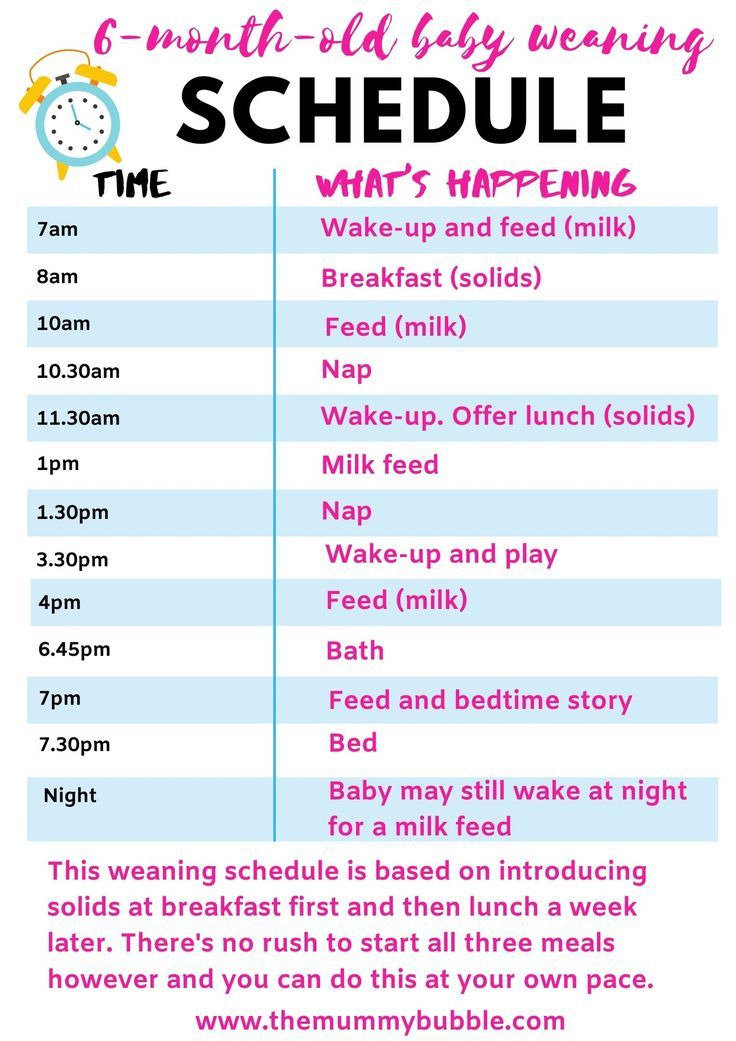 See a “Suggested “Milk” chart on the right sidebar to view how much “milk” your baby should be/might be drinking.
See a “Suggested “Milk” chart on the right sidebar to view how much “milk” your baby should be/might be drinking.
As always, you should feed your baby according to his or her cues and needs. Always consult your pediatrician if you are worried that your baby is not receiving proper amounts of either milk or solid foods.
Many breastfeeding moms supplement with formula as their milk supply may be low for a variety of reasons. We give kudos to those moms who continue to hang in there and offer their babies breast milk while supplementing. Hooray for you. You will find our menu samples include the use of both breast milk and formula, separately and together as a total “meal” solution.
Remember, always consult with your pediatrician regarding introducing solid foods to your baby and specifically discuss any foods that may pose allergy risks for your baby.
Suggested Daily “Milk” Intakes for Babies age 0 to 12 months
- 0-3 Months of age:
Breastfeed every 1-3 hours or Formula 18-40 ounces - 4-5 Months of age:
Breastfeed every 2-4 hours or Formula 24-45 ounces - 6-8 Months of age:
Breastfeed every 3-4 hours or Formula 24-37 ounces - 9-12 Months of age:
Breastfeed every 4-5 hours or Formula 24-31 ounces
Whole Cow Milk, as a drink, should not be introduced until 12 months of age. Learn about Introducing Yogurt and Feeding Cheese to your baby.
Learn about Introducing Yogurt and Feeding Cheese to your baby.
Table compiled from Merck Source
SHARE ON FACEBOOK SHARE ON PINTEREST
Proper nutrition of a child is a guarantee of health - Children's City Polyclinic No. 1
Every parent wants his child to grow up healthy, smart, happy.
From childhood, we must teach our children to choose from the variety of foods that are really good for health. The nutrition of children is somewhat different from the nutrition of adults. If the child's nutrition system is built correctly, then the child develops normally, both physically and mentally. nine0007
Make your family's way of life by introducing your child to proper nutrition every day. There is no need to arrange constant lectures from this on the topic of what is useful and what is harmful. By actively communicating with your child, setting an example, you instill good eating habits.
Only good things should be spoken at the table. The situation should help the child to relax, then the appetite will be good and the mood will be friendly. Children can help you with serving and decorating dishes. When serving vegetables and fruits, ask the children what vitamins and minerals they contain and why they are so useful. nine0003 In order to organize the proper nutrition of the child, you need to follow several important rules:
Rule 1
Food should be varied.
This is an important condition for the child's body to receive all the substances necessary for growth and development. Every day, the child's menu should include: fruits and vegetables; meat and fish; milk and dairy products; grain products (bread, cereals, cereals). Insufficiency or excess of food consumed by a child can adversely affect the activity of the gastrointestinal tract, contribute to metabolic disorders, increase overweight (even to various degrees of obesity) or lead to malnutrition. nine0007
nine0007
If the child refuses, there is a healthy dish, offer him to experiment and make the dish unusual.
So, with the help of dried fruits and nuts, you can put a funny face on porridge, use ketchup and greens to draw a pattern on scrambled eggs, put mashed potatoes on a plate in the form of a snowman figure, etc.
What should not be used in children's nutrition:
- Offal, except liver, tongue, heart; blood, liver, raw smoked sausages. nine0045
- Deep-fried foods and culinary products, chips.
- Curds, condensed milk with vegetable fats.
- Koumiss and fermented milk products containing ethanol (more than 0.5%).
- Cream confectionery containing vegetable protein.
- First and second courses based on fast food concentrates.
- Vinegar, mustard, horseradish, hot peppers and other hot spices and food products containing them, including hot sauces, ketchups, mayonnaises and mayonnaise sauces.
 nine0045
nine0045 - Pickled vegetables and fruits.
- Natural coffee and carbonated drinks, apricot kernels, peanuts.
- Products, including confectionery, containing alcohol.
- Food products containing a large amount of food additives in their composition (information is indicated by the manufacturer on consumer packaging).
- Dry concentrates for cooking first and second courses (soups, Dosherak vermicelli, cereals).
Rule 2
The child should eat regularly.
Compliance with the diet of children is of great importance for the absorption of nutrients by the body. Preschool children are recommended to eat 4-5 times a day, every 3 hours, at the same time, distributing the diet as follows: breakfast - 25%, lunch - 35%, afternoon snack - 15%, dinner - 25% . At school age, it is advisable to have four meals a day, every 4 hours with an even distribution of the daily ration: breakfast - 25%, second breakfast - 20%, lunch - 35%, dinner - 20%.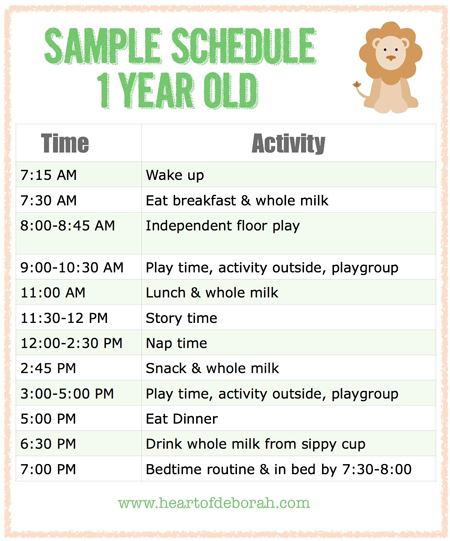 nine0007
nine0007
Try to stop snacking and teach your child to eat only at the table. If this still doesn't work, offer fruit, biscuits, juice for a snack - food that will help drown out hunger, but will not ruin your appetite.
Proper organization of meals at school in the form of hot school breakfasts and lunches is an important health-improving measure for student children in extended day groups, whose diet should be 50-70% of the daily norm, which, unfortunately, parents do not have enough are paying attention. Eating sandwiches, pizza, chips, chocolate bars is harmful because - this food is inferior in composition and also irritates the stomach, contributing to the development of gastritis. nine0007
Rule 3
A child's diet should replenish his daily energy expenditure.
If your child is overweight, limit the amount of sweets and high-calorie desserts, empty the refrigerator. Put a bowl of fruit on the table, a plate of whole grain bread. Children can eat fruits without any restrictions, it is almost impossible to overeat them, and they are very useful. With a lack of any mineral substance or vitamin, the child himself will ask for the apple or even greens he needs. nine0007
Put a bowl of fruit on the table, a plate of whole grain bread. Children can eat fruits without any restrictions, it is almost impossible to overeat them, and they are very useful. With a lack of any mineral substance or vitamin, the child himself will ask for the apple or even greens he needs. nine0007
Try to get your child involved in sports, take walks together, even if little by little, but regularly.
Thus, building proper nutrition for children requires taking into account the characteristics of the child's body, knowledge of certain rules and principles of healthy nutrition.
The material was prepared by the editorial and publishing department of GBUZ JSC "CMP" - 2020
Peculiarities of baby food
Peculiarities of baby food nine0113
Meals for children has its own characteristics and complexities.
When planning a child's diet, consider certain features of the child's body.
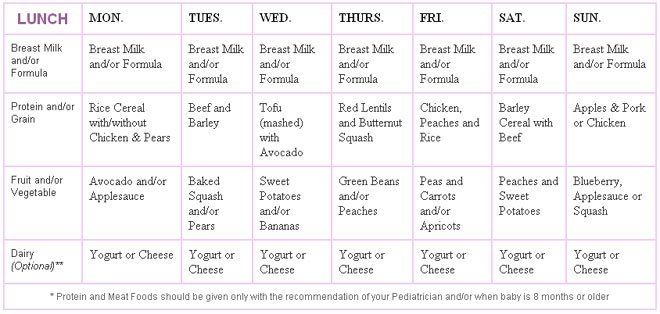
Child growth
The main difference between baby food is the growth of the child's body. That is, a baby needs more protein than an adult. Knowing about it many adults make the mistake of focusing on creating a high protein diet, although even the usual protein food consumed by adults contains
more protein than breast milk.
High mobility
Another feature of baby food is that children are very mobile in different from adults. Greater mobility of the child's body contributes to exchange normalization. If children are forcibly restricted in their movements, this provokes insufficient secretion of growth hormones, diseases, and as a result - developmental delay.
Consumption of sweets
Due to the high metabolic rate, children, unlike adults, are able to absorb significantly more sweets without much harm to themselves. However, they should not be encouraged to do so. Although sweet foods are natural origin are very beneficial for the child.
However, they should not be encouraged to do so. Although sweet foods are natural origin are very beneficial for the child.
In addition, children are much more active than adults. use cholesterol. It is very important for health, is the main component of the membrane, which surrounds cells throughout the body. And the child grows, and he forms a lot new cells. nine0119 An important nuance is the fat cells that make up the "fat" according to most are formed during the first years of life. Subsequently they grow and grow in size. Therefore, what it looks like an adult is largely associated with nutrition in childhood.
Regulatory Excellence mechanisms
The most important feature of baby food . Regulatory mechanisms in the child's body controlling the inflow and outflow of energy, function perfectly. His The body knows exactly what food and in what quantities it needs.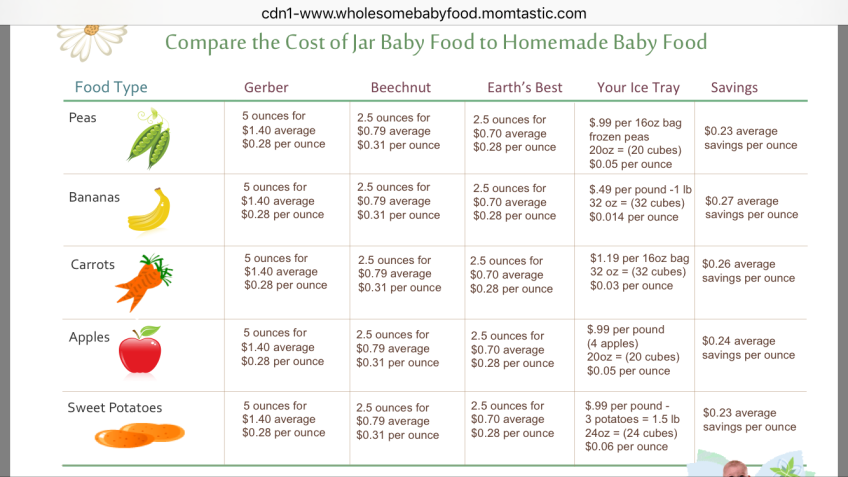 However, if there is an abundance of deliciously cooked (with spices, fried, fatty and etc.) and sweet dishes, the appetite will be coordinated by the tongue, and not by the physiological need. nine0007
However, if there is an abundance of deliciously cooked (with spices, fried, fatty and etc.) and sweet dishes, the appetite will be coordinated by the tongue, and not by the physiological need. nine0007
This level of regulation remains until the age of 14-17. Further it is preserved under the condition that a person leads a healthy lifestyle.
You can identify a number of general rules - recommendations, to which it makes sense to listen in order to provide the child with the right diet.
1 baby food rule - diet
Proper nutrition of the child involves the absence of strict dietary compliance.
What kind of lunch if you need to launch a rocket or put a doll to bed sleep? Such matters are as important for a child as love is for an adult, interesting work, rest. Children are tiny but full-fledged people who are still in need of care.
Children are tiny but full-fledged people who are still in need of care.
In addition, when there is no feeling of hunger, then eat the body is not yet ready to eat, eat without pleasure, therefore food won't go well. When hungry, the baby will ask for it. And there is no problem in that the child ate instead of three, two or five times a day. If food normal and do not use violence against the child, then there will be neither malnutrition nor overeating. nine0007
Baby food rule 2 - non-violence In most cases, the child is persuaded to "eat for dad, grandfather, mother, etc.", or they simply order "until you finish eating, you won’t get up from the table." And if we imagine how we would feel in such a situation? The baby's body does not need food at the moment, so he does not want to, only Total. Appetite may arise after some time, and there is no point in being offended. However, the appetite should be for natural products - porridge, potatoes, apple, milk, not sweets and cookies.
 In some cases, however, there are whims and tricks. nine0165 3 baby food rule - diseases
In some cases, however, there are whims and tricks. nine0165 3 baby food rule - diseases Separately, it is worth dwelling on proper nutrition a child with diseases. very wide the practice of "feeding" sick children is practiced. There is an opinion that this gives the body extra energy to fight the disease.
Paradox - in following: the body really needs strength, it mobilizes all the resources to restore the shattered balance. And the patient has no appetite because all the energy is directed to the fight against the disease, and it simply does not remains on the process of digestion. Animal instinct is at work here. is aimed at survival, and no food simply "climbs". For example, patients animals do not touch food, even if it lies in front of their noses. nine0119 And force-feeding for medicinal purposes directly harm the child.
Preferably, offer him hot drink - tea with honey, warm fruit drink, etc.
4th rule - freedom in everyday nutrition
In terms of everyday nutrition, it is better if children have choice of products. Thus, the problem itself is solved nutritionally balanced flax substances and dietary calories.
Based on long-term observations, it was found that with the presence of freedom of choice, children at the level of intuition or subconsciousness are able to create a menu that will be the best in every respect. adult function here - to orient the child in relation to the correct combination of products.
5 rule - fruit
Children can eat fruits without any restrictions, it is almost impossible to overeat them, and they are very useful. But if the child refuses, no need to force. With a lack of any mineral or vitamin, the child himself will ask he needs an apple or even greens.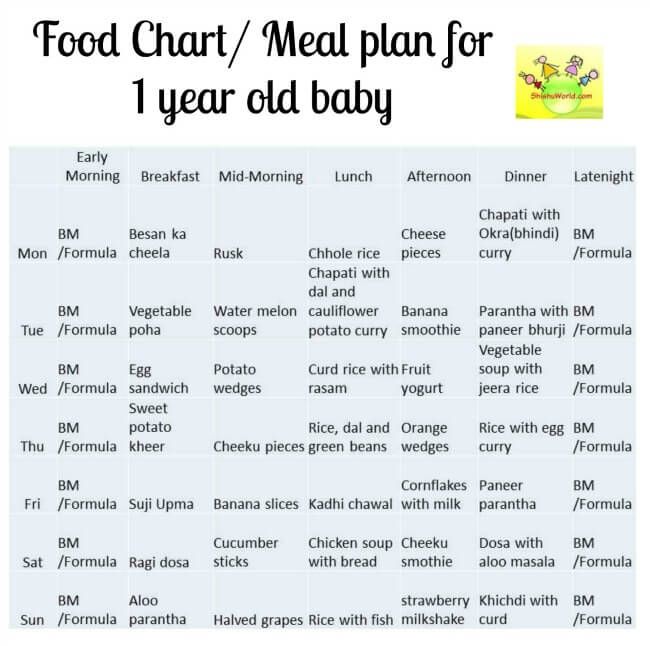 nine0007
nine0007
It is only necessary to coordinate the combination of fruits with other products. These combination rules are objective for both children and adults. If the products are combined correctly, healthy children will lack gas emission, the stool will be odorless with a normal consistency, the tongue will be red and clean.
6 children's rule nutrition - protein food
Protein food should be given to the child 1-2 times a day for desire, but do not worry if he prefers rice or potatoes instead of cottage cheese or pea porridge. But an excess, like a lack of protein, can lead to unpleasant consequences. nine0007
You should not teach a child to sausage, because it unnatural food that deceives the taste organs. From natural products origin, the child should be able to choose from what they eat adults.
7 baby food rule - dairy products
Milk, curdled milk, kefir, yogurt represent makes great food for kids.
 However, they should not be combined with starches. A child at the age of one and a half should not be fed with cereals for milk. The best option is milk and dairy products (room temperature) give as a separate meal. good variation is a combination of cottage cheese with tomatoes (carrots) with kefir, yogurt or milk. nine0165 8 baby food rule - sweets
However, they should not be combined with starches. A child at the age of one and a half should not be fed with cereals for milk. The best option is milk and dairy products (room temperature) give as a separate meal. good variation is a combination of cottage cheese with tomatoes (carrots) with kefir, yogurt or milk. nine0165 8 baby food rule - sweets If you feed your child with sweets, then definitely not after eating. Better just give half an hour - an hour before the main meal. As a rule, they always give after.
Sweet is really necessary for the children's body. Sweets natural origin - fruits, honey, dried fruits cover the needs child's body.
In case of painful conditions, reduced immunity, good options will offer him soaked dried fruits, fruits, melons, watermelons and hot drinks. And no more dishes and products. Several of these days month will replenish the resources of the child's body.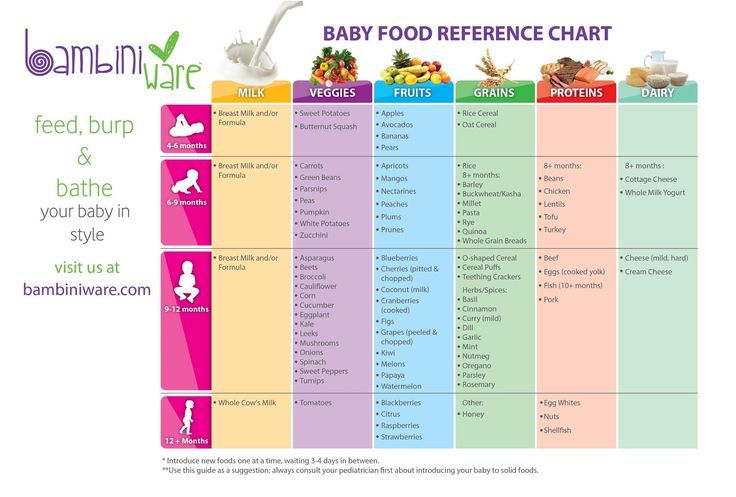

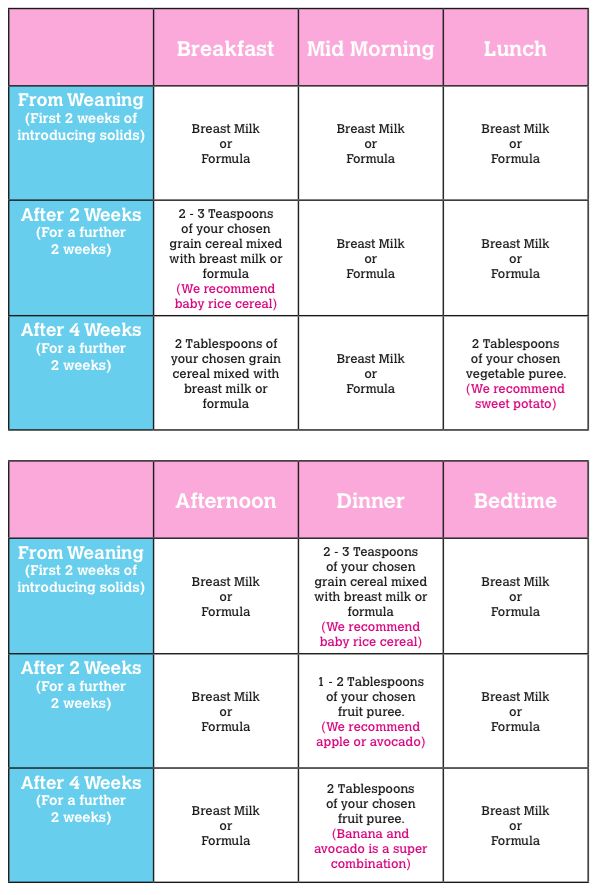 Many pediatricians are now recommending Meats as first foods due to the Iron content – ask your pediatrician.
Many pediatricians are now recommending Meats as first foods due to the Iron content – ask your pediatrician. As with breastfeeding on demand, Baby Led Weaning is a method of introducing solid foods that leaves it up to your baby to decide when and how much to eat. While not necessarily a “hands off” approach, The foods listed on our 4-6 month old chart and those listed on the chart here make great foods for introducing solids using the baby led weaning method!
As with breastfeeding on demand, Baby Led Weaning is a method of introducing solid foods that leaves it up to your baby to decide when and how much to eat. While not necessarily a “hands off” approach, The foods listed on our 4-6 month old chart and those listed on the chart here make great foods for introducing solids using the baby led weaning method! Remember, breast milk and/or infant formula are providing for the total nutrition of your baby at this stage.
Remember, breast milk and/or infant formula are providing for the total nutrition of your baby at this stage.